Serving:
Middlesex County and the MetroWest Area of MA
-
AN IMPORTANT MESSAGE FROM BEE BUSTERS INC
To our valued customers:
Contact us directly for triage. Call or text for questions or concerns. Remember that a high percentage of our work is done from outside your home!
All our work is guaranteed until 12/31 of the year we treat. New and existing customers call or text today (978) 302-0985.
Be well and stay safe!
Ants, Termites & Other Pests
Free Phone Estimates | Senior and Military Discounts | Same-Day Service
Free Estimates
Senior and Military Discounts
Same-Day Service
Hours:
After Hours/Emergency Number: 978-302-0985
Prevent Damage to Your Home or Business
Carpenter ants and termites can cause significant damage to homes and businesses that include wood construction. These pests burrow into your walls, floors, and ceiling, and they can weaken the building's structure.
There are other insects that can cause you problems. Some include spiders, stink bugs, ticks, pantry moths and even lady bugs. We can help you with these and all of your pest control needs.
For prompt service, call Bee Busters Inc. We are fully licensed, and we provide same-day service if needed. We have over 30 years of experience in the field. We guarantee our work until December 31 of the year in which we do it. For a FREE pest identification and FREE estimate, please
contact us today.
Carpenter Ants
- Carpenter ants are among the largest ants. There are several species that may be found infesting homes and other buildings. Winged queen ants may be as large as one inch. Ants are divided into different categories: workers, queens, and males. The best method to separate carpenter ants from other ants is by the following characteristics: a waist with one node and a thorax with an evenly rounded upper surface. Carpenter ants differ from termites by having dark-colored bodies, narrow waists, elbowed or bent antennae, and if present, hind wings shorter than front wings.
- They feed on protein and sugar. Outdoors, they feed on living and dead insects. Indoors, they feed on meats, syrup, honey, sugar, jelly, and other sweets. Carpenter ants DO NOT eat wood. They remove wood as they create galleries and tunnels.
- They nest in moist wood including rotting trees, tree roots, tree stumps, and logs or boards lying on or buried in the ground. They can also nest in moist or decayed wood inside buildings. Wood decay may be caused by exposure to leaks, condensation, or poor air circulation. Nests have been found behind bathroom tiles; around tubs, sinks, showers, and dishwashers; under roofing, in attic beams, under subfloor insulation, in hollow spaces like doors, curtain rods, and wall voids. Carpenter ants may also nest in foam insulation.
- Carpenter ants damage wood by excavating and creating galleries and tunnels. They are clean, and they do not contain sawdust or other debris, with a well-sanded appearance. It is common to find carpenter ants in homes during spring. You may also see carpenter ant swarms. When carpenter ant nests are indoors, mating swarms become trapped inside. Finding large numbers of winged ants indoors is a sure sign that an indoor nest exists and may give the approximate location of the colony.
- Finding one to several winged queens does not automatically mean a nest is present indoors. It is more likely the queens have just mated and have entered the home, searching for nesting sites. Wingless queens found walking indoors are new queens that have recently shed their wings but are still searching for nesting sites. They are not an indication of an indoor nest.
- Workers may become active during winter if the nest receives sufficient warmth from sunlight, mild outdoor temperatures, or from indoor heat. When ants are active during winter they will forage at night, searching for moisture. On a bright sunny day, ants may be seen walking randomly through different areas of the house. Nests can exist in a house during winter but not be noticed. If the nest exists at a site without sufficient heat or sunshine, the ants will remain dormant until spring.
- An important method for preventing carpenter ant problems indoors is to eliminate high moisture conditions that are attractive to them. Also, replace any moisture-damaged wood. Be careful that wood or lumber that is stored in a garage or near the house is kept dry and, if possible, elevated to allow air circulation. Store firewood as far away from buildings as possible. Remove tree and shrub stumps and roots. Trim branches that overhang the home. Prune branches that touch electrical lines or other wires that are connected to the house; carpenter ants can travel from branches to lines and use them like a highway to buildings.
- The best method to control carpenter ants is to locate and destroy the nest, replace damaged or decayed wood, and, if they exist, eliminate moisture problems. Eliminating a carpenter ant nest is a difficult and challenging task. Parameter treatments keep ants out and people inside! We do not believe in spraying your baseboards but rather treat chemically outside unless indoor treatment is needed. Indoor treatment can consist of poking holes in walls as needed or going to the extreme and exposing a nest by cutting the wall open. Also, we may suggest ant bait gel, ant traps or a combination of the two. We openly suggest an ant parameter treatment for any kind of ant problem because it works!
Little Black Ants
- Small native species of the USA these ants vary from dark brown to deep black. Size 1.5 – 2 cm with 6 legs and a shiny appearance. Like all other ants they have antennae that have a bend in them.
- Reproductive males and females have wings – both males and females.
- They inhabit areas that are wooded like tree stumps, lumber area. Inside they like wall voids, masonry and under floors.
- They will feed on other insects, grease, oil, fruit, juice.
- They usually begin outside and make their way inside to search for food.
- They are persistent pests and are difficult to eradicate.
- They do have a stinger but usually if not bothered will sting.
- When they invade a home, they will enter in large numbers and are extremely persistent.
- Because of their foraging for food inside the home they are considered a home pest.
- Swarms are common in late spring.
- Treatment inside the home is highly recommended, especially in cracks and cervices. An external perimeter treatment also suggested. If you can follow the train and treat at the source that is also helpful however the source is often difficult to locate.
Odorous House Ants
- Encounter humans as a sudden invasion of a house by hundreds of small-to-medium sized (1/16”-⅛” long), blackish ants, especially just after a heavy rain.
- Although they sometimes establish a nest in a wall void or similar location within a house, their main nest is usually outdoors, in the ground near a shrub, or under a thick layer of mulch.
- Following their trails to where they disappear into a crack under a door, or through an opening to the outside, may help to confirm that pest identification.
- If you crush one or two of these ants and they smell like the odor of rotting coconut, this will further support that they are probably Odorous House Ants.
- Their colonies vary greatly in size, with 300 to 300,000 workers, and may include many queens.
- They tend to forage inside, traveling in large numbers and can contaminate human food supplies. They are found in exposed soil and wall cracks in every region of the U.S.
- These ants will feed on a variety of foods, but they generally prefer sweets.
- Both workers and reproductive may live for several years.
- Workers from different colonies are not hostile toward each other and may routinely move along the same foraging trails.
- Controlling these ants requires that you find their nest and treat it thoroughly with a properly labeled insecticide, if the situation allows that to be done.
- Unusual structural situations, inability to find the nest(s), or customer concerns may require the use of baits; baiting for any pest is always very dependent on the pests’ accepting and feeding adequately on your baits.
- A perimeter treatment for ants is very helpful since it becomes a barrier between nest and foraging location, especially if foraging in the home, where the ant can track pesticide back to their home to minimize and kill the home-based ant population.
Pavement Ants
- Pavement Ants are dark brown or black with 6 legs measuring approximately 1/8 inch in size and found throughout the USA.
- These ants are found in sidewalks, driveway cracks and in foundations. They create small dirt piles/mounds on top of the surface. Pests, such as pavement ants, are attracted to moisture.
- All ants are social so that when ants are present, they occur in large numbers.
- If bothered they will bite or sting. They do have a stinger, but all ants of this species are one size.
- These black pavement ants do not pose a public health risk, but they can contaminate food and should be avoided.
- These black ants will eat almost anything. Pavement ants have been known to consume insects, seeds, honeydew, honey, bread, meats, nuts, and cheese. They forage in trails for distances of up to 30 feet.
- Although ants are seldom involved in disease transmission, their sheer numbers can be overwhelming to homeowners because they prefer to inhabit living areas with moisture such as bathrooms and kitchens and are readily visible to homeowners. The ants are often attracted to food items and become unwelcome guests in homes.
- To prevent black pavement ants, eliminate standing water around the home. Keep tree branches and other plants cut back from the house. Sometimes pavement ants use these branches to get into your home. Make sure that there are no cracks or little openings around your house. Ensure firewood and building materials are not stored next to your home because pavement ants like to build nests in stacks of wood. Indoors, clean up spills and crumbs on counter tops and kitchen floors.
- If you notice pavement ants in your property, contact an ant pest control specialist for prompt treatment. A thorough inspection is key to help further infestation and chemical treatment may be offered.
Spiders
- Over 40,000 arachnid species spin silk. Some use their web to capture prey. Female house spiders lay about 250 eggs in a silken sac that is brownish in color and round. There may be more than one sac in the web at a time. A female house spider may produce up to 17 sacs, containing a total of more than 3,760 eggs, in her lifetime. The eggs hatch in about 7-10 days. Adults may live for a year or more.
- For both females and males, the color is highly variable. House spiders have eight eyes with two lateral pairs almost touching. The last tarsal segment of the fourth pair of legs has a row of serrated bristles. Some spider species are poisonous. Most spiders do not bite but those that do, their bite can be extremely painful, and the venom is of real concern.
- When hunting or trying to escape a predator, some spiders can jump great distances – often several times the length of their body.
- House spiders can be a nuisance but besides a general fear of them, they pose no real threat to humans. This however does not matter to many humans since many have difficulty seeing spiders in their home.
- House spiders tend to build their webs in sheds, garages, warehouses, basements. Often time too you can see them around windows and under eves. Inside the house they are found around winders, basements crawl spaces, garages. Webs are destroyed by a hand wipe or a duster, however spiders can reconstruct their web within days once destroyed.
- Spider control is a multi-step process that includes inspection of the home or building, accurate identification, prevention, sanitation, and mechanical measures. Caulking is suggested but many NE homes have so many cracks and crevasses around them that caulking could be considered a full-time job. Also caulking dries out and after a few years we tend to see the problem increase since caulking that is dry, cracks and then cracks reopen. Screening is a great way to use barrier prevention Use tiny screening in places that are too large to caulk. Vacuums are often used as well to remove egg sacs, webs and the adult spikers crawling around. Brooms are a temporarily solution since by using one you usually do not catch the spider but just remove the web. Homeowners should also store firewood at least twenty feet from the home on a raised structure to deter spiders from hiding out in the wood. Make sure to wear gloves when moving the wood, and inspect it carefully before bringing any wood pieces indoors.
- Spider control is a multi-step process that includes inspection of the home or building, accurate identification, prevention, sanitation, and mechanical measures. A yearly treatment is wonderful to keep them at bay. Even though spiders are beneficial since they do eat bugs we do not like in our home. crawling around the living room wall while we are watching TV.
Stink Bugs
- The brown marmorated stink bug is considered an invasive species after being first seen in the mid-1990s from Eastern Asia. They are a nuisance for homeowners when they get indoors during late summer and autumn as the temperatures outside begin to fall. They spend winter hiding inside the walls, attics, or crawl spaces of a building, but can sometimes be seen near windows or doors as they first come inside. Like other invasive species, stink bugs are difficult insects to control once they infest a structure or food source.
- Stink Bugs are mottled grey-brown in color and have six legs. Their body shape is a triangular shield-like, and they are about ¾ of an-inch-long. Stink bugs are not known to bite humans or damage property except for crops. They are a threat to the agricultural industry.
- Tips to keep Stink Bugs out of your home include….
-Replace, repair and seal: Caulk up small opening, screen windows and doors – consider a door sweep. Repair around utility pipes, under wood openings and behind chimneys.
-Keep lights out during the evening and pull shades and blinds inside to minimize the attraction to light.
-Reduce moisture sites.
-Eliminate moisture and checks for leaks at pipes and drains.
-Remove food sources. Empty garage regularly, clean surfaces often, sweep floors from crumbs.
-Ventilate basements, attics, garages and crawl spaces to eliminate harborage points.
-Inspect boxes with holiday decorations in your attic and grocery bags before bringing them indoors. Stink bugs can travel on these items and make themselves cozy once inside the home.
-Keep shrubbery well-trimmed around the home – at least 1 to 1.5 feet away from the home. Place firewood at least 20 feet away from the house and five inches off the ground.
-Think before squishing to avoid odor.
-Use a vacuum cleaner for their removal once they are inside your home and dispose of the bag to prevent odor.
- Pretreat for stink bugs before they become a problem. A perimeter treatment along with a extensive internal inspection by a pest control application are recommended methods of prevention and elimination of stink bugs. If you are infested already have your pest control applicator do an extensive inspection and make recommendations regarding any chemical treatment if warranted at that time.
Lady Bugs
- They are easily identifiable by their orange or red bodies and block spots. The swarms of the insects have been reported in homes, schools, and office buildings. They invade homes in mass, causing them to be a nuisance pest. Lady bugs are beneficial because they eat plant-eating insects, such as aphids, mealybugs, mites, and scale insects.
- During the spring and summer months, ladybug populations typically grow because the seasons favor tender foliage and aphid infestations.
- Lady bugs enter the home in autumn, swarming in homes, schools, and offices. Adults seek protected places to overwinter including under leaves, rocks, and landscape timbers and homes and buildings as well.
- If ladybugs have already entered a home, homeowners can use a vacuum to remove them, but it is important to dispose of the bag outdoors to prevent the insects from crawling out. Ladybugs are known to secrete an oily yellow liquid when disturbed, and release a foul odor just before they die, so squishing them is not suggested. This liquid also can stain.
- Most ladybug species do not pose a health threat to humans. However, the multi-colored Asian lady beetle known to aggravate asthma and cause allergic reactions in some people, a strong reason for ladybug pest control.
- We recommend homeowners to seal cracks around windows, door frames, and utility pipes with silicone caulk to close entry points. Special attention should be paid to areas of the home that get the most sun, as ladybugs are attracted to the warmth. Trimming shrubbery and branches away from a home's exterior can also help to prevent ladybugs from gaining access. An exterior treatment to foundations is also highly suggest controlling ladybug population in your home or office.
- The most effective way to get rid of ladybugs or prevent them from entering homes and buildings is to seal cracks around windows, doors, siding, and utility pipes, behind chimneys, and underneath the wood fascia and other openings. Use a good quality silicone or silicone-latex caulk. Damaged screens on doors and windows should be repaired or replaced. If ladybugs have already entered a home or building, a vacuum cleaner can aid in their removal. If an infestation has developed inside a home or building, a licensed ladybug pest control operator should be called to evaluate and assess the problem.
Mosquitoes
- There are different types of mosquitoes found throughout the world; they are an annoyance to most because of the itchy bites, but they can also transmit disease.
- Mosquito bites can transmit West Nile virus, dengue fever, Eastern equine encephalitis (EEE), Yellow Fever, Malaria, Chikungunya and other diseases. If a mosquito feeds off a diseased host, some can transmit pathogens that can infect other hosts it subsequently bites. Mosquitoes are vectors of EEE, spreading the illness by feeding on infected animals and transmitting it to humans. It is spread to humans through the bite of an infected mosquito.
- Mosquitoes are small, about 1/8 - 3/8" long, have six legs and long mouthparts called a proboscis. Their coloring varies. They are difficult to spot because of their small size and their quick ability to fly. They are most active from dawn to dusk. Only female mosquitoes bite and feed on humans. They need a blood meal to lay fertile eggs. They breed continuously, so a female will search for a blood roughly every two days. Nectar from flowers is their main source of energy for both males and female.
- Many people are bitten by mosquitoes with no side effects except the typical itchy welt. Seek medical attention as soon as possible if you show signs of illness after being exposed to mosquitoes.
- Factors such as perfume, wearing dark colors, body temperature, blood type and the presence of naturally occurring skin bacteria can affect how attractive a person is to a mosquito. Most are active around dusk and dawn, so avoiding the outdoors during these times will reduce the risk of getting a bite. While outside wear long sleeves, long pants, closed-toed shoes, and insect repellent to protect skin. A small fan at outdoor gatherings can reduce them, as they are not strong flyers. and use an insect repellant containing DEET, picaridin, IR3535, and some oil of lemon eucalyptus and para-methane-diol.
- Homeowners should regularly check their property for containers that could be collecting water and providing a safe harbor for mosquitoes to grow on a weekly basis. Mosquitoes lay eggs in water, as little as a ½ inch of standing water. Empty containers such as empty tires and flowerpots, pool covers and baby pools after a rainstorm. Water in birdbaths should be changed often. This includes bird baths, ponds, and swimming pools. Remove unneeded vegetation or trash from around any standing water source. Screen windows, doors, and other openings with fine mesh, sealing around all screen edges and keeping doors and windows shut.
- Many homeowners erroneously believe that all pest management professionals do is spray chemicals to treat their homes. This is simply not true anymore. Integrated Pest Management (IPM) controls pests by getting rid of the three things mosquitoes need to survive: food, shelter, and water. Consumer education is a vital part of any IPM program. This approach consists of inspection, identification of the pests, employment of two or more control measures, and evaluation of effectiveness through follow-up inspections. Let us evaluate the situation and advise you on how to get rid of mosquitoes.
Meal Moth
- Measures approximately 5/8th to ¾ of an inch with 6 legs, an elongated body with 2 antennae. Outer parts of the wing are copper red in color but has grey areas mid-section.
- The grain beetle has similar habits as the meal moth.
- Feed on grains, nuts, seeds, bird seed, dog food to name a few. They infest foods and can contaminate those products. Can reproduce rapidly.
- Keep them at bay by cleaning cupboards often. Store grains and other dry foods in hard sealable containers.
- Prevention
-Use hard plastic or glass containers and keep grains in these sealable containers instead of boxes and paper containers (sugar, flour, and cereal) as they are example that are easily infested.
-These pests are brought home often by the grocery story. Inspect your packages for damage prior to introducing them into your kitchen.
-Clean your cabinets often. Lean tables, floors and shelves and get rid of trash immediately.
-Seal cracks in your kitchen. Keep close inspection to water pipes and stove entry into your home. Use caulking that can adequately and safely seal those cracks. Check the label as to if caulking type effective around these surfaces.
- If found….
-Remove old grains and discard immediately. Get them out of your home.
-Clean your cupboards – soap, water. Vacuum corners.
-A solution of 10% bleach solution and air dry is a great way to clean.
- If needed reach out to your pest control person. Chemical treatment into cracks and cervices along with a fumigation, if needed, can help but your work in cleaning and removing old food products will go a long way to working with your pest control applicator.
Carpet Beetle
- Carpet beetles get their name from the rainbow color on the back surface. The beetle itself are black centered with white, brown, and yellow patches in an irregular arrangement. They are round and have 6 legs when fully grown. They are found throughout the United States.
- Carpet Beetles are found on woolen fabric, near dead insects, in fur, hides feathers, bones, silk, hair, carpets, and dust bunnies. Found throughout the home in attics, carpets, wall to wall rugs and even in your furniture in the cracks and cervices.
- It can take slightly less than one year to 3 years for them to grow from egg to adult. They do not pose a major health risk but are more of a nuisance pest if not addressed.
- They can damage the fabric they feed on so it is suggested to protect items by carefully storing items that can be stored in plastic.
- Sealant in cracks and cervices is an important preventative measure as well. Replace weather stripping and screens if broken.
- Try to maintain a clean and clutter free environment and clean often. Dispose of left-over foods and vacuum often to pick up crumbs, dust bunnies and pet hair. Dry cleaning of clothing and storage in plastic is suggested for those items that will not be used for long periods of time.
- There are methods to control carpet beetles. Have your pest control technician carefully inspect your home, suggest IPM methods for prevention and if needed apply a pesticide to edges of carpets to reduce and eliminate the carpet beetle. These pests and their treatment are a careful collaboration of pest control applicator and homeowner working together.
Subterranean Termites
- Termites are the highest level of organized insects. They evolved from cockroaches. About 3,106 types are currently identified. Termites are small, measuring between 4 to 15 millimeters (0.16 to 0.59 in) in length. Winged kings & queens are dark brown to brownish-black & have 2 pairs of equal size wings extending well beyond the ends of their bodies. Termites are soft-bodied insects, with hard, saw-toothed jaws working like shears.
- The kings & queens are usually larger & capable of reaching over 1” long. A mature termite colony has a three-caste system made up of reproductive kings & queens, soldiers, & workers. A colony reaches maturity in 4 to 5 years. Winged kings & queens from a mature colony emerge in what is called a nuptial flight, mating flight, or swarm.
- Soil residing, social, & colonial insects. A termite soil nest can be as much as 20 feet below the surface. Termites travel through soil-type or “mud” tubes to obtain food sources above the ground. Vein-like, muddy-looking tubes about the diameter of a pencil somewhere in your home (sign of subterranean termites). Tunnel-like holes in your wooden siding (sign of subterranean termites). Termites feed on wood & wood materials or cellulose.
- Swarms of termites are commonplace in Spring & Fall, particularly after a rain.
- Upon flight, winged males & females land on the ground & break-off their wings. Wingless males & females form pairs & begin to search for sources of wood or food as well as moisture in soil. Once food & moisture are located, the royal couple digs a chamber, enters & seals the opening. After mating, the queen starts placing eggs. She may survive 25 years, laying tens of thousands of eggs. The eggs are yellowish-white & hatch after about 50 to 60 days.
- Worker termites are soft-bodied, creamy-white, wingless, & blind. As immature, they are fed regurgitated food by the king & queen. Once able to digest wood, workers provide food for the entire termite colony. Worker termites take on all the labor which includes obtaining food, feeding other termites & immatures, excavating wood, & building tunnels. Worker termites mature within 1 year or so & live up to 5 years.
- Soldiers are creamy white, soft-bodied, wingless, & blind. The head of the soldier is elongated, brownish, hard, & equipped with 2 jaws. Soldiers must be fed by workers because they are incapable of feeding on their own. There are less soldiers in a colony than workers & their only job is to defend the colony invaders. Soldiers live up to 5 yrs.
- Termites often infest homes & cause damage to lumber, wood panels, flooring, drywall, wallpaper, plastics, & many paper products. Serious damage can result over a long period of time or potential loss of a home’s structural strength. In addition, losses can include flooring, carpeting, art, books, clothing, furniture, & valuable papers. Subterranean termites will feed on dead parts of trees but are not thought to attack live trees.
- Termite communication is partly through pheromones. Individual termite colonies develop their own specific odors. An intruder into the colony is immediately recognized. An alarm pheromone tells the soldier termites to attack. Sound is another means of termite communication. Soldiers & workers strike their heads against the tunnels, making vibrations that an intruder has entered their colony.
- A certified pest inspector should inspect both the interior & exterior surfaces of the foundation, especially where wood is in contact or near the soil. Mud tubes& flying termites are all evidence of termite infestation.
Fire Ants
- These ants get their common name from their very painful bites and stings.
- They are small (workers are 1/16” - ¼ “long) yellowish red to black ants which are distributed from Virginia to Florida, and from Georgia to California.
- Workers of most species are several different sizes.
- They usually nest in the ground, but sometimes part (or a whole colony) may be located within a structure, usually in wall voids near heat or moisture (such as near a chimney or a bath trap).
- The 2 most important species of this grouping are the Red Fire Ant and the Southern Fire Ant.
- Colonies of the Red Fire Ant may be as numerous as 30 to 100 colonies per acre, with 80,000 to 250,000 ants per colony.
- They sometimes form multi-queen colonies which may be still larger.
- Mature queens may lay up to 1,500 eggs per day.
- Swarming may occur 6 to 8 times per year.
- A typical colony mound is rounded, about 18” high, and about 24” across.
- Mounds have caused farm machinery to break, and farm animals have reportedly been killed by multiple stings when they stepped into a mound.
- People usually develop a blister-like pustule at the site of a sting, and true allergic reactions to fire ant stings can be life threatening.
Earwigs, Centipedes, Millipedes & Silverfish
- House centipedes are elongated, worm-like body with their many pairs of legs. They always have an odd number of pairs of legs. They are yellow to dark brown and worm like. They are found throughout the USA.
- Their body is usually yellowish to dark brown in color, sometimes with darker stripes or markings. Their heads have a pair of long and sensitive antennae covered with dense hairs. They have small mouths and have large, claw-like structures that contain a venom gland.
- If handled roughly, some larger species can inflict a painful bite that can break human skin and cause pain and swelling, like a bee sting. They do not pose a health problem but are more of a nuisance pest.
- Millipedes are black or brown or red with mottled patterns. They are wormlike and cylindrical with large antennae. They are found throughout the USA. Millipedes are sometimes called "thousand-leggers" because of their many pairs of legs,
- Most are nocturnal and are primarily scavengers, Millipedes are found throughout the world.
- Some give off a foul-smelling fluid which can be toxic to small animals and pets and can cause small blisters on humans.
- Earwigs are dark brown have 6 legs and are long and narrow. They have antennae and are found throughout the USA. Size ranges from ¼ to 1 inch long. They have two pairs of wings. Their body have leathery appearance. The pincers located on the back of an earwig’s abdomen are quite frightening to many people.
- When startled or uncovered, earwigs will quickly run away. They will pinch humans. While painful, no venom is transferred, and the pinch rarely breaks the skin. These insects are attracted to lights, causing them to become a nuisance on patios and porches during summer evenings.
- Silverfish are nocturnal creatures that move swiftly when disturbed to escape detection. and attics. Once indoors, they will feed on flour, dried meat, glue, wallpaper, cereal, rolled oats, and other starches. They can contaminate food, stain clothing, destroy books. These pests are scavengers that will eat virtually anything available.
- Silverfish have a lifespan ranging from two to eight years. They can survive without food for a year.
- All are found in areas of high moisture. Homeowners should remove harborage sites like leaf piles, mulch piles, rotted logs, in trash or piles of leaves and grass, or other vegetation on their property. Relocate firewood piles away from the home. Trees or shrubs should be trimmed often. Check gutters and downspouts drain to ensure proper drainage. Caulking around your home. Keep lawns mowed and water in the AM. Remove leaf piles and grass clippings.
- They will enter homes by way of exterior cracks and openings. Once inside, they are found near water sources, such as bathrooms, laundry, kitchens, basements, crawlspaces, & potted plants. Reduce areas of moisture in and around your home. Keep rooms cool, clean, and dry, Vacuum cracks and crevices frequently. Remove old papers, boxes, books, and clothes. Pest control technicians can inspect, assess inside and out and often do a perimeter treatment to assist with minimization of infestation, often a similar treatment to an ant foundation and quite effective in combination with sealant.
Roaches
- The American cockroach are red brown with yellow figure 8 pattern on the back of their head. They have 6 legs and are oval. Their size can range between 1 ¼ inch to 2 1/8 inch. They are found worldwide. They have 2 exceptionally long antennae.
- There are many signs of a cockroach infestation. (1) Homeowners will see the fast-moving insects themselves usually fleeing to dark areas. (2) Cockroaches leave behind droppings in the dim areas in which they hide. These small droppings are blunt on the ends and have ridges on the sides. (3) Cockroaches produce a pheromone that some people describe as having a “musty” smell. You may notice this odor around the house.
- Cockroaches are filthy pests, and when in the home can pose a severe health threat. There are several types of bacteria, worms, and other human pathogens. The roach pick up germs on their legs and body as they crawl threw sewage, decay matter, etc. and can transfer it onto your food and cooking surfaces.
- People with asthma should be careful since the roach’s saliva, urine and fecal droppings contain a protein that can cause an allergic reaction and asthma attacks to individuals.
- Cockroaches are some of the most resilient pests in the world. They exhibit unique survival tactics, including the ability to live for a week without their head.
- Cockroaches live primarily outdoors, but it is not uncommon to find them inside too. In the Northern United States, American cockroaches are typically found in sewers and drains. Outside they are often spotted in shady, humid areas like flowerbeds and underneath mulch. In the summer they can be found outdoors in yards and alleys. They will move indoors when they have a food shortage or a climate change. In general, they prefer warm, moist, and dark environments with temperatures between 70- and 80-degrees F. They often enter structures by being brought in on human belongings, coming up from the sewer system via drains or occasional mass migration from other structures, dumps, etc., during warm weather.
- Barrier exclusion with caulking helps prevent cockroaches from entering the home through small cracks in walls, gaps near electric sockets and switch plates, and up through drains.
- Keeping counters, sinks, tables and floors free of clutter and crumbs also help. Do not leave dishes pile up in the sink. It is also good practice to store food in airtight containers and avoid leaving pet food out in the open. Vacuuming weekly and, ventilating crawl spaces to prevent moisture buildup and running water periodically in spare bathrooms to keep traps filled.
- If a cockroach infestation is suspected, contact a licensed pest control professional for advice and appropriate treatment plan to get rid of them as well as help prevent a future problem.
Bed Bugs
- Bed bugs are mahogany to rust brown when unfed and flat and broad oval. Once they have fed their color turns red-brown and become swollen and elongated. Nymphs (babies) are colorless. They can reach ¼ inch long as adults. Nymphs are approximately 1.3 mm. They lay 5 eggs in a day and more than 500 in a lifetime. They can survive without eating for many months.
- They can hide in small cracks and crevices. Mostly found in bed parts (Mattresses, box springs), but can be found on couches and chairs and even inside picture frames, behind electric switch plates, as well as cracks and crevasses in the room along the walls. They can hitchhike into your home easily on your belongings of every kind. Bed bugs can withstand a wide range of temperatures from freezing to over 100 degrees F.
- Bites are the most reported sign of an infestation and more than half of people reach out for treatment after discovering bites and welts on their bodies.
- Many people pick them up for the first time in a hotel room when traveling. They area also found readily in college dorms. Another location can be by purchasing secondhand furniture.
- Prevention is key. Here are some suggestions. (1) Thoroughly clean and vacuum your suitcase after a vacation (2) check your sheets on occasion for blood spots (3) occasional quick visual inspection of bed cracks with a flashlight (4) Check out where your pet sleeps since bed bugs can infest their bed as well (5) Treat and or inspect secondhand furniture before bringing it into your home.
- If you already have bed bugs you can prevent them from spreading in your home by, carefully check your purse, backpack, briefcase, etc. before leaving the house. Also vacuum and clean these bags thoroughly to make sure bed bugs have not found their way inside. As for your clothes, place them in the dryer and shake them before you wear them again. Leave the house for the day as well. Also get the sheets in the laundry immediately care when you transport them to the laundry room so that you do not infect another part of your home in the transport. Launder on high heat.
- Fortunately, if bed bugs do find their way in, there are multiple methods of control that are available to pest management professionals, including vacuuming, steaming, freezing, heat treatments, use of mattress and box spring encasements, fumigation, and the use of insecticides. Bed bug service often involves the use of insecticides, which have been demonstrated to be effective and safe treatment options when used correctly by trained personnel.
- If an infestation occurs, call a pest control professional immediately for assistance. Bed bugs can breed and multiply quickly, so the earlier you can combat the problem the better.
Call for a Free Over-the-Phone Estimate
Same-day service is available, and we're on call 24/7 for emergencies.
(978) 263-2663
We'll identify your pest for free!
Text us a picture at (978) 302-0985!
We Honor Your Service
Senior and Military Discounts - $25 Off
Be sure to let us know if you qualify for our senior or military discount when you call! Cannot be combined with any other offer. Contact Bee Busters Inc for details. Call Today (978) 263-2663
Call
HOURS
Mon - Fri 9:00 am - 5:00 pm
Sat Emergency Service Only
Sun Emergency Service Only

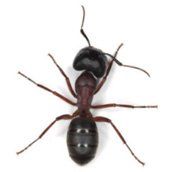
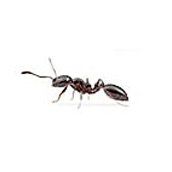

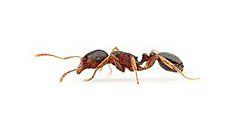
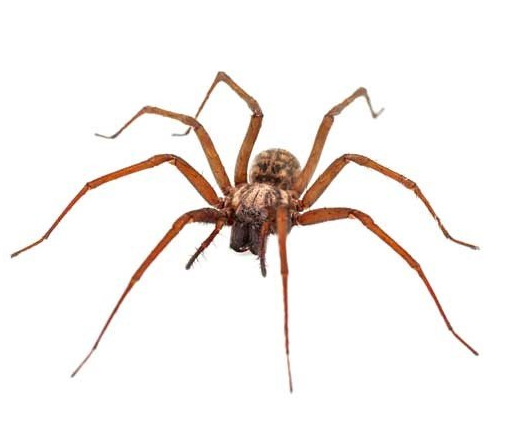
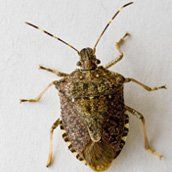
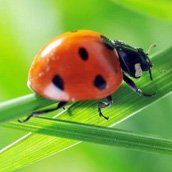
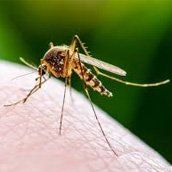
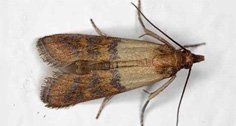
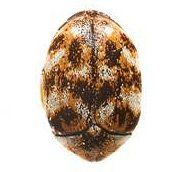
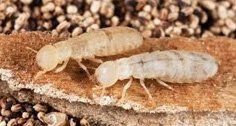


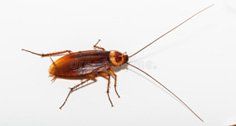


Share On: